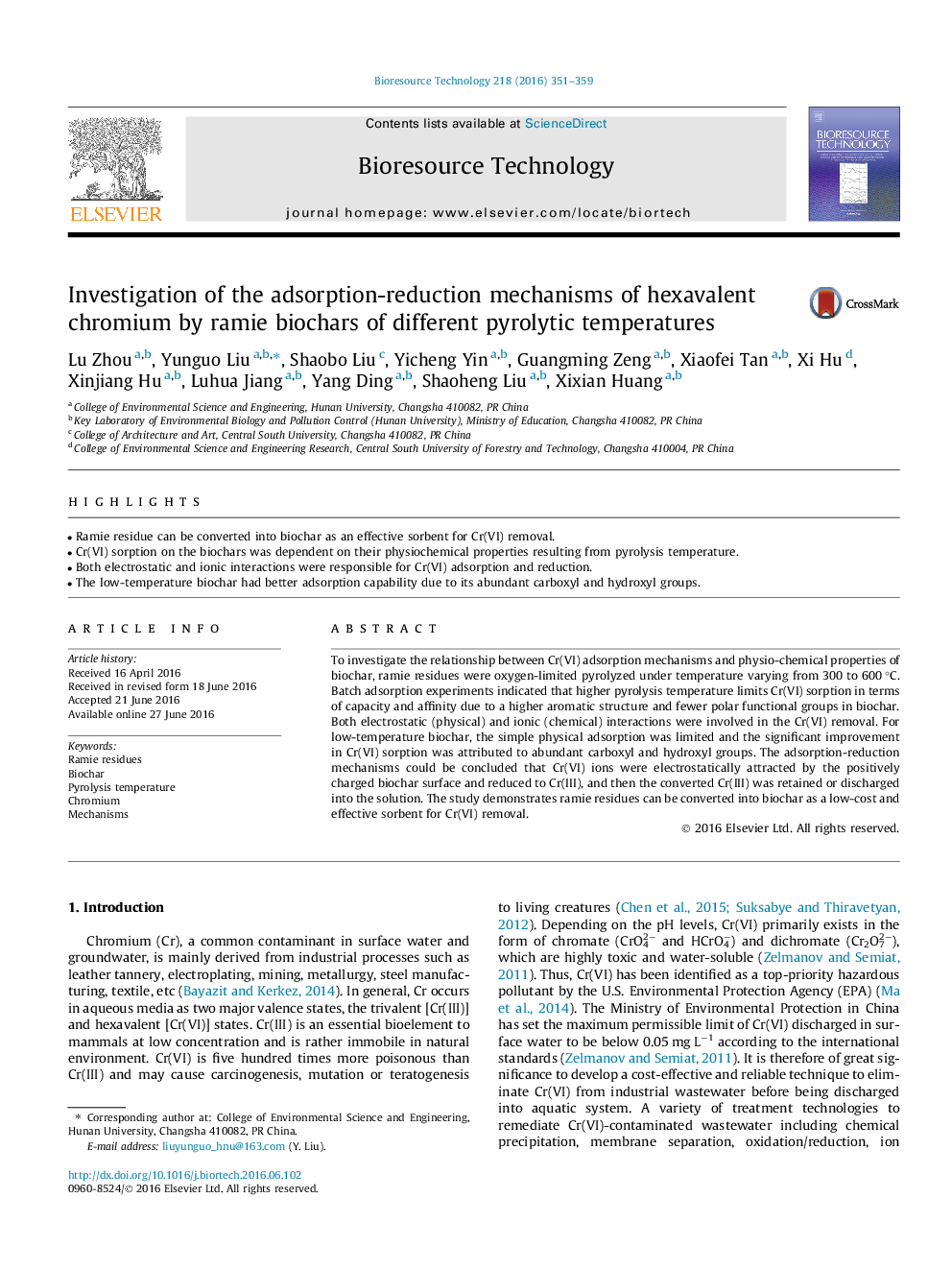| Article ID | Journal | Published Year | Pages | File Type |
|---|---|---|---|---|
| 7070275 | Bioresource Technology | 2016 | 9 Pages |
Abstract
To investigate the relationship between Cr(VI) adsorption mechanisms and physio-chemical properties of biochar, ramie residues were oxygen-limited pyrolyzed under temperature varying from 300 to 600 °C. Batch adsorption experiments indicated that higher pyrolysis temperature limits Cr(VI) sorption in terms of capacity and affinity due to a higher aromatic structure and fewer polar functional groups in biochar. Both electrostatic (physical) and ionic (chemical) interactions were involved in the Cr(VI) removal. For low-temperature biochar, the simple physical adsorption was limited and the significant improvement in Cr(VI) sorption was attributed to abundant carboxyl and hydroxyl groups. The adsorption-reduction mechanisms could be concluded that Cr(VI) ions were electrostatically attracted by the positively charged biochar surface and reduced to Cr(III), and then the converted Cr(III) was retained or discharged into the solution. The study demonstrates ramie residues can be converted into biochar as a low-cost and effective sorbent for Cr(VI) removal.
Related Topics
Physical Sciences and Engineering
Chemical Engineering
Process Chemistry and Technology
Authors
Lu Zhou, Yunguo Liu, Shaobo Liu, Yicheng Yin, Guangming Zeng, Xiaofei Tan, Xi Hu, Xinjiang Hu, Luhua Jiang, Yang Ding, Shaoheng Liu, Xixian Huang,
